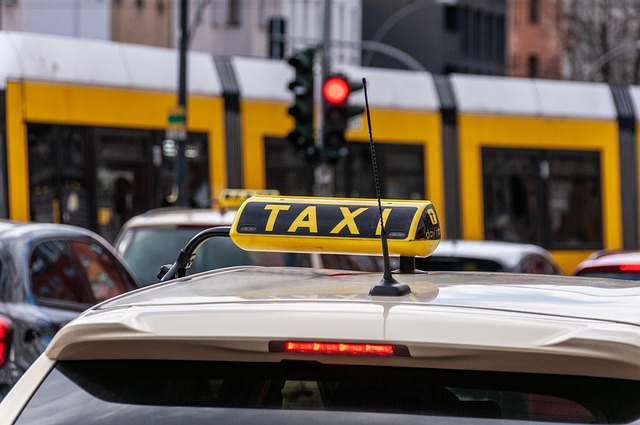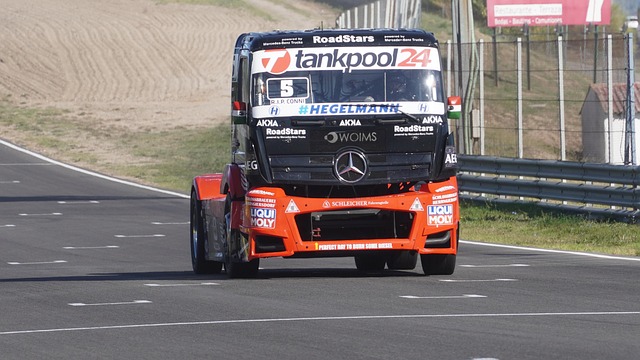Looking to register your car in California? This comprehensive guide walks you through every step, from understanding the requirements to securing your plate. We cover essential documents needed, the role of the DMV, and crucial processes like VIN verification and vehicle inspection. By following these clear instructions, you’ll efficiently navigate the registration process, ensuring your vehicle complies with California laws. Don’t forget to utilize our guide’s practical tips for a seamless experience with the DMV vin verifier.
- Understand Requirements for Car Registration in California
- Gather Necessary Documents for Car Registration
- Visit the DMV to Register Your Vehicle
- Verify VIN and Complete Inspection
- Pay Registration Fees and Receive Your Plate
Understand Requirements for Car Registration in California

Before registering your car in California, it’s important to understand a few key requirements. The California Department of Motor Vehicles (DMV) mandates that all vehicles entering the state pass a vin inspection. This involves verifying the vehicle’s unique Vehicle Identification Number (VIN) through a process known as a mobile VIN verifier or simply VIN inspection.
The DMV uses this information to ensure that cars on California roads meet safety and pollution standards. You’ll need original documents like your car’s title, registration from out-of-state, and proof of insurance. Additionally, some vehicles might require further inspections or documentation based on their age and type. Utilizing a mobile VIN verifier can streamline the process by enabling you to conduct this critical initial check conveniently and efficiently.
Gather Necessary Documents for Car Registration

Before heading to the California Department of Motor Vehicles (DMV) for car registration, it’s crucial to gather all the necessary documents. This process ensures a smooth and efficient experience at the DMV. One essential step is to obtain a Vehicle Identification Number (VIN) verification from a trusted source. Many people opt for a mobile VIN inspection or use a mobile VIN verifier app to get this information quickly. The VIN, unique to each vehicle, plays a vital role in the registration process as it helps identify your car’s make, model, and year accurately.
Having accurate and up-to-date documents is key. You’ll need proof of ownership, typically a title document; a valid driver’s license or identification card; and a current auto insurance policy. Additionally, you might require the vehicle’s service records, especially if it’s a classic car or has undergone significant modifications. With these documents in hand, visiting the DMV becomes a straightforward task, allowing you to register your car efficiently using the provided services, including their VIN verifier tool.
Visit the DMV to Register Your Vehicle

Visiting the DMV is a crucial step in registering your vehicle in California. You’ll need to bring several documents and pass a vehicle inspection, which includes a VIN (Vehicle Identification Number) verifier to ensure the authenticity of your car’s details. This process verifies that your vehicle meets all safety standards and emissions requirements set by the state.
At the DMV, you’ll complete necessary paperwork, including forms for registration and title transfer if applicable. A mobile VIN verifier can be handy here, as it facilitates a quick and accurate inspection of your car’s history, saving you time during the registration process. Once all documents are in order and your vehicle passes the vin inspection, the DMV will issue a registration certificate, allowing you to legally operate your vehicle on California roads.
Verify VIN and Complete Inspection

Before proceeding with the registration process, it’s crucial to verify your vehicle’s VIN (Vehicle Identification Number) and ensure it passes a complete inspection. The DMV offers several methods for VIN verification, including using their official vin verifier tool, which allows you to cross-reference the information against their database to ensure accuracy. Additionally, many mobile vin verifiers provide convenient online services, enabling you to check your car’s history from the comfort of your home or even while you’re on the go.
During the inspection, all essential components of your vehicle will be assessed for any signs of damage, tampering, or non-compliance with California’s safety and emissions standards. This includes checking the engine, brakes, lights, tires, and other critical systems. A pass in this phase ensures that your car is safe for road use and eligible for registration. Proper documentation and proof of identification are required to complete the verification process successfully.
Pay Registration Fees and Receive Your Plate

After verifying your vehicle’s information through a DMV VIN verifier or completing any necessary repairs, it’s time to pay the registration fees. The California Department of Motor Vehicles (DMV) offers various payment options, including online, by mail, or in-person at a DMV field office. The cost will depend on your vehicle’s type and age, so be sure to check their official website for current rates. Once your payment is processed, the DMV will issue your new registration and license plate.
You can opt for a standard plate or choose from various specialty plates available. For added convenience, many residents prefer mobile vin inspection or mobile vin verification services, which allow them to complete the entire process from the comfort of their homes. These services use a specialized tool to check your vehicle’s history and verify its VIN (Vehicle Identification Number), ensuring a smooth registration experience.
Registering a car in California involves several straightforward steps, from understanding the necessary requirements and gathering essential documents to visiting a DMV office. By verifying your Vehicle Identification Number (VIN) and completing a safety inspection, you’ll be on your way to securing your vehicle’s registration and receiving its unique license plate. Remember to keep your paperwork organized and up-to-date, as it facilitates future transactions with the California DMV VIN verifier.
